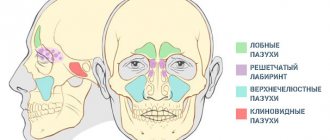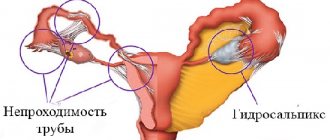Focal pneumonia is an infectious-inflammatory disease that does not affect all of the lung tissue, but only a certain area of it, forming into small-focal or large-focal inflammation in the lobules of the lung. This pathology can be either secondary, since it can be a consequence of many ailments, including bronchitis, or independent, since it can develop as a result of pathogenic bacteria entering the human body. Focal pneumonia is the most common type of pneumonia (about 60% of cases).
Focal pneumonia: causes of development
Focal pneumonia is most often a complication after a severe and long course or complete lack of proper treatment of another disease. Focal pneumonia can develop due to the following ailments:
- acquired heart disease;
- myocardial infarction;
- bronchitis;
- ARVI;
- benign or malignant tumors;
- whooping cough;
- measles;
- scarlet fever;
- meningitis;
- purulent otitis;
- acute catarrh of the respiratory tract;
- furunculosis;
- flu;
- sepsis;
- chlamydia;
- typhoid fever;
- osteomyelitis;
- peritonitis;
- chronic diseases of the lungs and respiratory organs;
- obstructive bronchitis;
- any other pathologies of a purulent or inflammatory nature.
Like many other ailments, focal pneumonia can also be caused by hypothermia, severe stress, nervous strain, inhalation of toxic substances and penetration of a foreign body into the lungs and bronchi.
Pathogenic agents that can cause focal pneumonia include:
- streptococci;
- staphylococci;
- pneumococci;
- E. coli;
- proteus and Friedlander's wand;
- viruses of groups A and B;
- adenovirus;
- microscopic fungi;
- rhinovirus;
- parainfluenza virus.
All of the above microorganisms are predisposing factors in the development of not only focal pneumonia, but also its community-acquired form. Pulmonologists at the Yusupov Hospital in Moscow are qualified specialists who will help identify the cause and form of the disease, as well as prescribe competent treatment for focal pneumonia in adults.
Also, in addition to the obvious reasons, it is worth noting the importance of factors influencing the development and progression of pneumonia. These include:
- decreased immunity;
- severe stress;
- lack of physical activity;
- previous surgical interventions on any internal organs;
- smoking;
- poor nutrition;
- overheating of the body;
- hypovitaminosis.
Pathogenesis
The mechanism of formation of a focal form of pneumonia is the introduction of a pathogenic pathogen into the lung tissue. The bacterium begins to multiply rapidly, causing an outbreak or several (focal and plasmacytic) inflammations. The body produces antibodies to the microorganism, which, when interacting with it, release cytokines that damage lung tissue. The liquid part of the plasma leaves the bloodstream and permeates the alveoli. The dead tissue is then replaced with new tissue.
Paths of penetration of pathogenic microorganisms:
- hematogenous - through the bloodstream;
- Lymphogenic - through the lymphatic system;
- Contact - transfer of the inflammatory process from nearby tissues and organs;
- bronchogenic - entry of microbes through inhaled air;
- aspiration - aspiration of contents from the nasopharynx or oropharynx.
Morphological features of focal pneumonia:
- most often occurs in the posterior and posterior segments of the lungs;
- Foci of inflammation are observed inside the lobes;
- dense, bright in cross section;
- exudate with an admixture of cellular elements accumulates in the alveoli;
- serous nature of alveolar exudate;
- exudate is distributed unevenly, in some bubbles more than in others;
- the bronchi are infiltrated with leukocytes;
- Goblet cells predominate in the bronchiolar epithelium.
Focal pneumonia: symptoms and treatment
The onset of the disease, as a rule, begins asymptomatically. On the second or third day, primary manifestations of a viral infection appear:
- increased body temperature;
- runny nose;
- severe dry cough or with mucous sputum;
- general weakness;
- drowsiness;
- increased sweating.
For timely diagnosis of pneumonia, it is necessary to pay attention to the following further symptoms:
- dyspnea;
- very high temperature, which is difficult to get rid of (more than 38 degrees);
- tachycardia;
- low pressure;
- mucopurulent nature of expectorated sputum;
- pain and sensations of chest compression when breathing and coughing;
- burning when breathing;
- lack of appetite;
- wheezing during breathing;
- nausea, vomiting;
- diarrhea;
- chills;
- joint and muscle pain.
As a rule, during an examination, a pulmonologist can obtain an accurate picture of the disease, since pneumonia is characterized by wheezing in the pleural cavity, however, for an accurate result, X-rays, computed tomography, and a general blood test are often prescribed to exclude or confirm the presence of leukocytosis. It is possible to determine the etiology of the causative agent of the disease using microbiological examination of sputum. The Yusupov Hospital provides all the necessary equipment for examinations and tests, as well as a convenient service that allows you to contact our clinic daily, around the clock.
Stages
- Stage - exudate or inflammatory erythema. Increased permeability of the walls of the alveolar capillaries, due to which serous exudate with a high content of microorganisms accumulates in the lumen of the alveoli.
- This stage is yellow or red hyperemia. Lung tissue thickens as a result of the deposition of large amounts of fibrin in the lumen of the alveoli. The red area is the migration and accumulation of red blood cells, and the gray area is the migration and accumulation of leukocytes.
- The reduction (resolving) stage. Liquefaction and removal of inflammatory exudate by the bronchial tree.
Focal pneumonia in adults: treatment
Treatment of focal pneumonia in adults at the Yusupov Hospital begins with a visit to a pulmonologist, who, depending on the classification of the disease, prescribes treatment. As a rule, conservative treatment of focal pneumonia consists of taking:
- antibacterial drugs. The fundamental factor for a speedy recovery is antibacterial therapy, which includes taking antibiotics prescribed individually. If no improvement occurs within 3 days, then it is necessary to change the drug;
- physiotherapy: therapeutic exercises, massages, inhalations, restoratives and medications;
- symptomatic therapy: antihistamines, anti-inflammatory drugs, expectorants, as well as mucolytics and bronchodilators;
- general rules: bed rest, high-calorie diet, drinking plenty of fluids, vitamin therapy, regular ventilation of the room.
Treatment
The main treatment method for refractive pneumonia is antibacterial therapy. Medicines are initially prescribed experimentally. After bacterial testing, the treatment regimen is based on the pathogen identified. First, broad-spectrum antibiotics are prescribed to prevent complications from developing. Sputum is then collected to test for bacteria and determine the exact type of microorganism and its sensitivity to drugs. The last course of the selected drug was given. The drug should also be administered a few days after the fever has subsided.
Complications after focal pneumonia
Complications after focal pneumonia most often develop as a result of incorrectly selected or untimely treatment. Possible complications after pneumonia include:
- toxic shock and sepsis;
- acute respiratory failure;
- anemia;
- pleurisy;
- myocarditis;
- abscess formation;
- gangrene;
- pulmonary hemorrhage;
- meningoencephalitis;
- glomerulonephritis;
- amyloidosis;
- pleural empyema;
- heart failure;
- burdening the work of the pulmonary system;
- transition of pneumonia to a chronic form;
- spread of a total infectious process throughout the body.
To avoid the development of secondary pathologies, the patient must be observed by a pulmonologist for six months after recovery. Pulmonologists at the Yusupov Hospital are qualified professionals in their field. Having prescribed the correct therapy, they will monitor the patient’s short-term recovery, as well as the absence of the development of complications against the background of the illness experienced in the future.
Community-acquired pneumonia
Pneumonia is one of the most common acute diseases; it is a group of acute infectious (mainly bacterial) diseases of different etiology, pathogenesis, and morphological characteristics, characterized by focal damage to the respiratory parts of the lungs with the obligatory presence of intra-alveolar exudation.
Community-acquired pneumonia (synonyms: home, outpatient) is an acute disease that arose in a community setting, accompanied by symptoms of lower respiratory tract infection (fever, cough, chest pain, shortness of breath) and “fresh” focally infiltrative changes in the lungs in the absence of obvious diagnostic alternatives.
The reasons for the development of an inflammatory reaction in the respiratory parts of the lungs can be either a decrease in the effectiveness of the body’s defense mechanisms, or a massive dose of microorganisms and/or their increased virulence. Aspiration of the contents of the oropharynx is the main route of infection of the respiratory parts of the lungs, and therefore the main pathogenetic mechanism for the development of pneumonia. Under normal conditions, a number of microorganisms, such as Streptococcus pneumoniae, can colonize the oropharynx, but the lower respiratory tract remains sterile.
In cases of damage to the “self-cleaning” mechanisms of the tracheobronchial tree, for example, during a viral respiratory infection, favorable conditions are created for the development of pneumonia. In some cases, an independent pathogenetic factor may be the massive dose of microorganisms or the penetration into the respiratory parts of the lungs of even single highly virulent microorganisms that are resistant to the action of the body’s defense mechanisms, which also leads to the development of pneumonia.
The etiology of community-acquired pneumonia is directly related to the normal microflora that colonizes the upper respiratory tract. Of the numerous microorganisms, only a few that have increased virulence are capable of causing an inflammatory reaction when they enter the lower respiratory tract.
Such typical pathogens of community-acquired pneumonia are:
- Streptococcus pneumoniae;
- Haemophilus influenzae.
Atypical microorganisms have a certain significance in the etiology of community-acquired pneumonia, although it is difficult to accurately determine their etiological significance:
- Chlamydophila (Chlamydia) pneumoniae;
- Mycoplasma pneumoniae;
- Legionella pneumophila.
Typical but rare pathogens of community-acquired pneumonia include:
- Staphylococcus aureus;
- Klebsiella pneumoniae, less commonly other enterobacteriaceae;
- Streptococcus pneumoniae is the most common causative agent of community-acquired pneumonia in people of all age groups.
The drugs of choice for the treatment of pneumococcal pneumonia are betalactam antibiotics - benzylpenicillin, aminopenicillins, including protected ones; II-III generation cephalosporins. New fluoroquinolones (levofloxacin, moxifloxacin) are also highly effective.
Macrolide antibiotics (erythromycin, roxithromycin, clarithromycin, azithromycin, spiramycin, midecamycin) and lincosamides have fairly high antipneumococcal activity and clinical effectiveness. But still, macrolide antibiotics for this pneumonia are a reserve remedy for beta-lactam intolerance.
Haemophilus influenzae
is a clinically significant causative agent of pneumonia, especially in smokers and patients with COPD (chronic obstructive pulmonary disease). Aminopenicillins (amoxicillin), “protected” aminopenicillins (amoxicillin/clavulanate), cephalosporins of the II-IV generations, carbapenems, fluoroquinolones (early ones - ciprofloxacin, ofloxacin and new ones - levofloxacin, moxifloxacin, gatifloxacin) have high natural activity against Haemophilus influenzae.
Chlamydophila (Chlamydia) pneumoniae and Mycoplasma pneumoniae
- usually characterized by a mild course. Mycoplasma pneumonia - more common in people under 40 years of age. The drugs of choice for treating these pneumonias are macrolides and doxycycline. New fluoroquinolones are also highly effective.
Legionella pneumophila
- usually characterized by a severe course. The drug of choice for the treatment of Legionella pneumonia is macrolide antibiotics (erythromycin, clarithromycin, azithromycin). Early and new fluoroquinolones are also highly effective.
Staphylococcus aureus
is an infrequent causative agent of community-acquired pneumonia, but its importance increases in older people, in people who take drugs, abuse alcohol, and after influenza. The drugs of choice for staphylococcal pneumonia are oxacillin; amoxicillin/clavulanate, cephalosporins, and fluoroquinolones are also effective.
Klebsiella pneumoniae and other enterobacteria
- very rare pathogens of community-acquired pneumonia, have etiological significance only in certain categories of patients (old age, diabetes mellitus, congestive heart failure, cirrhosis of the liver). III-IV generation cephalosporins, carbapenems, and fluoroquinolones have the highest natural activity against these pathogens.
Pneumonia should be suspected if the patient has a fever in combination with complaints of cough, shortness of breath, sputum production and/or chest pain. Patients often complain of unmotivated weakness, fatigue, and severe sweating, especially at night.
Signs of pneumonia such as acute fever, chest pain, etc. may be absent - especially in weakened patients and the elderly.
For mild pneumonia, antibacterial therapy can be completed once stable normalization of body temperature is achieved within 3-4 days. With this approach, the duration of treatment is usually 7-10 days. In cases where there is clinical and/or epidemiological evidence of mycoplasma or chlamydial etiology of pneumonia, the duration of therapy should be 14 days. Longer courses of antibiotic therapy are indicated for pneumonia of staphylococcal etiology or caused by gram-negative enterobacteria - from 14 to 21 days.
If legionella pneumonia is indicated, the duration of antibacterial therapy is 21 days. In case of community-acquired pneumonia, it is extremely important to quickly assess the severity of the patients' condition in order to identify patients requiring emergency intensive care. The allocation of patients with severe pneumonia into a separate group seems extremely important, given the high mortality rate, the presence, as a rule, of severe background pathology in patients, the peculiarities of the etiology of the disease and the special requirements for antibacterial therapy.
Late diagnosis and delay in starting antibacterial therapy (more than 8 hours) lead to a worse prognosis of the disease.
Unfortunately, pneumonia can have various complications, such as:
- pleural effusion;
- pleural empyema (accumulation of pus in the pleural cavity);
- destruction/abscessation of lung tissue (formation of limited cavities in the lung tissue);
- acute respiratory failure;
- infectious-toxic shock;
- sepsis;
- pericarditis, myocarditis (heart disease);
- nephritis (kidney disease) and others.
In case of pneumonia, a differential diagnosis must be made with such diseases as:
- pulmonary tuberculosis;
- neoplasms (primary lung cancer, endobronchial metastases, bronchial adenoma, lymphoma);
- pulmonary embolism and pulmonary infarction;
- immunopathological diseases (idiopathic pulmonary fibrosis, eosinophilic pneumonia, bronchocentric granulomatosis, bronchiolitis obliterans with organizing pneumonia, allergic bronchopulmonary aspergillosis, lupus pneumonitis, systemic vasculitis);
- other diseases/pathological conditions (congestive heart failure, drug-induced (toxic) pneumopathy, foreign body aspiration, sarcoidosis, pulmonary alveolar proteinosis; lipoid pneumonia, rounded atelectasis).
In conclusion, it must be said that only a doctor can make a diagnosis, determine the severity of the disease and the prognosis. If the patient has a fever, dry cough or cough with sputum, shortness of breath, chest pain, unmotivated weakness, fatigue, excessive sweating, especially at night, consult a general practitioner.
SM-Clinic’s own laboratory and instrumental base allows you to quickly diagnose and diagnose pneumonia. You will be prescribed timely treatment for pneumonia, individual for each person, taking into account the severity of the disease, age, and concomitant diseases. A therapist will help you become healthy again.
Prevention of focal pneumonia
There are a number of preventive measures aimed at preventing the disease of focal pneumonia:
- stopping or minimizing communication with people infected with pneumonia;
- healthy and balanced diet;
- avoiding hypothermia or overheating;
- strengthening the immune system: vitamin therapy, hardening the body;
- regular physical activity;
- giving up bad habits (especially smoking);
- regular ventilation of premises;
- avoiding public places with a lot of people (especially during epidemics);
- breathing exercises;
- timely treatment of ARVI and other colds;
- vaccination against pathogens;
- Regular examination by a general practitioner.
A timely visit to a therapist at the Yusupov Hospital can prevent the development of focal pneumonia, as well as prevent its transition to a chronic form.
Differences from lobar pneumonia
Respiratory nosologies are similar in their symptoms, but the main difference between focal pneumonia and follicular pneumonia is the mechanism of development:
- Uneven pneumonia is caused by a highly virulent strain of the microorganism and affects the entire lobe of the lung. The symptoms in this case will be more pronounced and severe compared to focal pneumonia.
- Focal pneumonia - pathogens are less pathogenic. The disease is milder, rarely leads to complications and is better treated.
Where to treat focal pneumonia in Moscow
Focal pneumonia is a disease that can be cured without consequences if you consult a doctor in a timely manner. Pulmonologists at the Yusupov Hospital have a wealth of experience in treating patients with pneumonia of varying severity, which guarantees a high-quality individual approach to each patient. New modern equipment will ensure correct diagnosis and, as a result, correct diagnosis and competent treatment. You can make an appointment with a professional pulmonologist on the Yusupov Hospital website or by calling the clinic.
Factors that may contribute to the occurrence of pneumonia
The occurrence of a disease such as pneumonia is inextricably linked with infection by microorganisms that cause the disease. But in the presence of concomitant diseases and a number of factors, the risk of infection increases. In order to prevent the occurrence of pneumonia, you should familiarize yourself with the list of such factors:
- diseases of internal organs that are in the stage of decompensation. Pneumonia occurs especially often against the background of diseases of the heart, kidneys and lungs;
- oncological diseases;
- immunodeficiency and other diseases associated with serious problems in the functioning of the immune system;
- ventilation suffered by the patient;
- diseases of the central nervous system;
- general anesthesia;
- The patient's age is more than 60 years.
At-risk groups
There are risk groups that are most susceptible to pneumonia. Their representatives do not necessarily become victims of this complication, but their chances of suffering from the disease are much higher than for other people. In order to take timely care of your health and prevent complications, you should know the risk factors that can lead to illness. The risk group includes:
- people with weak immunity - patients with immunodeficiency, who have recently undergone surgery, weakened by a long-term illness, etc.;
- people with chronic diseases that constantly weaken the immune system;
- taking hormonal medications (they also lower immunity);
- people who are in a state of clinical depression and constant stress;
- pregnant women or women who have recently given birth;
- patients who have had ARVI or influenza;
- people with alcohol or drug addiction.









